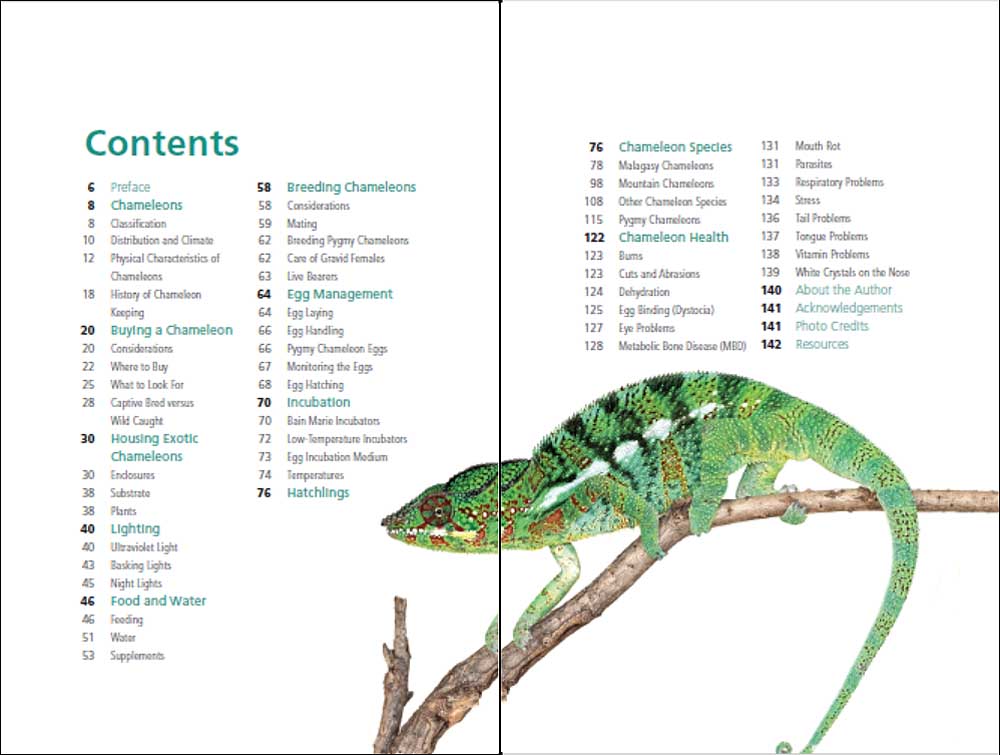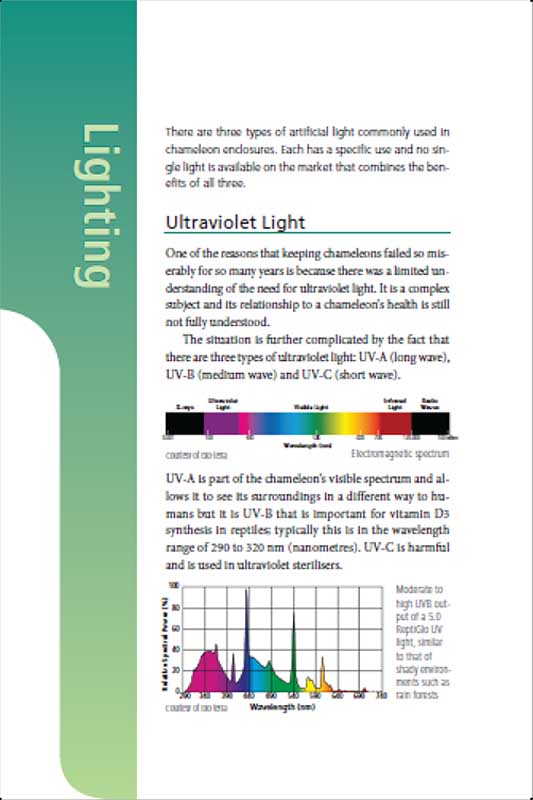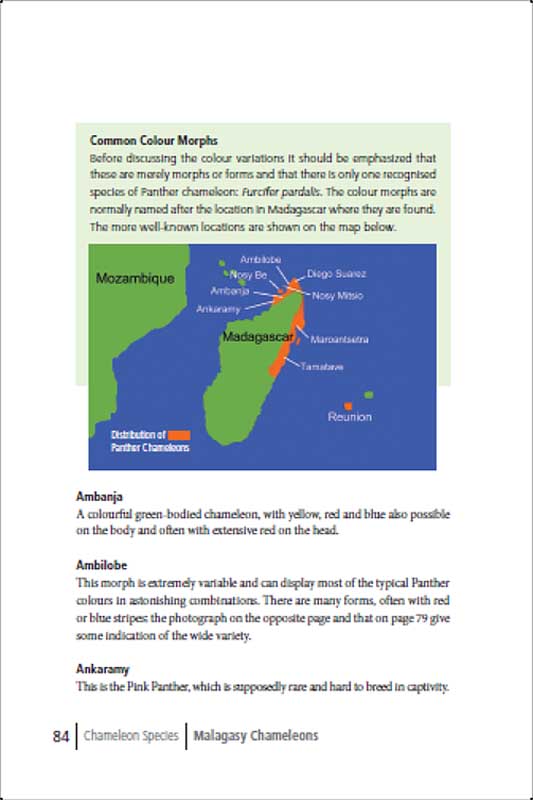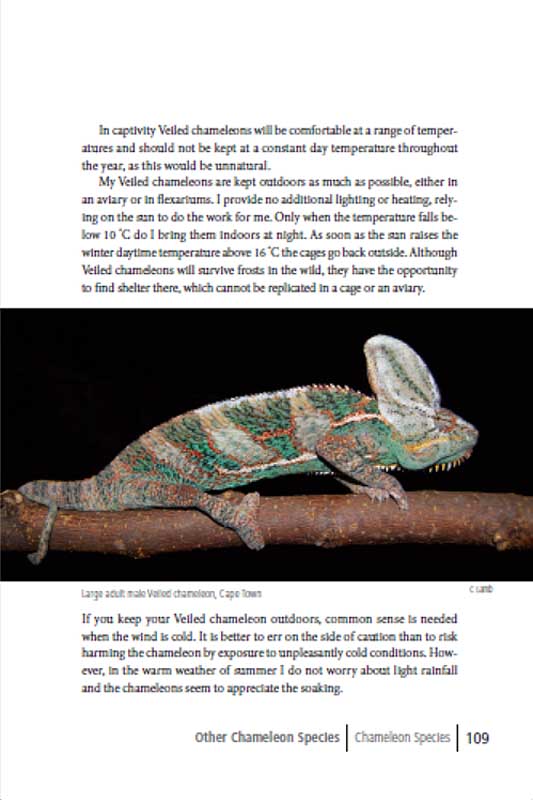Exotic Chameleons in South Africa
 This book covers all aspects of the care for exotic chameleons in South Africa and elsewhere, from housing, lighting, feeding through to a chapter on health issues. All the species likely to be encountered in South Africa – or anywhere else – are covered with their own chapters.
This book covers all aspects of the care for exotic chameleons in South Africa and elsewhere, from housing, lighting, feeding through to a chapter on health issues. All the species likely to be encountered in South Africa – or anywhere else – are covered with their own chapters.
Although aimed at keeping chameleons in South Africa, this book contains considerable valuable information for chameleon keepers in any country. Here you will find reliable information on UV light, vitamin and calcium supplements, and a lot more.
Most chameleon books are focussed on people living in either the US or Europe. This book bridges the gap between those countries and the rest of the world, where copying those conditions won't work. I've used the same techniques in Malaysia and Mexico with great success.
Sample Pages
These samples pages show how comprehensive this book is in its dealing with this fascinating subject. It covers the day to day care for your chameleon, using photograph, diagrams and graphs. Health care is described in depth. And the sections on breeding explain the way to succeed with, from egg management through incubation to the care of the hatchlings. This is information is not just for those keeping chameleons in South Africa but will be of great interest and benefit to anyone who wants to succeed with the care and breeding of chameleons wherever they live.
Buy direct from Amazon
- Paperback: 144 pages
- Publisher: CreateSpace Independent Publishing Platform (7 Jan. 2014)
- Language: English
- ISBN-10: 149484429X
- ISBN-13: 978-1494844295
Click the link and Amazon will direct you to the nearest Amazon store for your location.
If you want to give your chameleon the best food possible, consider breeding your own insects. By doing so, you can offer your chameleon a wide variety of nutritious insects when the petshops are restricted to just a few types. Have a look at my other books, for example:







